Trauma


Home | Areas of Application
Trauma is when a person has been exposed to a traumatic or very stressful event. A distinction is made between acute stress disorder (ASD) and post-traumatic stress disorder (PTSD). Symptoms are similar in both forms of trauma, except that in the case of ASD, they usually begin immediately after the trauma and last from 3 days to 1 month while they last longer than a month in the case of PDST. Sometimes PDST does not manifest until 6 months after the trauma.
In the past, trauma symptoms were considered as anxiety disorders. This is no longer the case because many patients do not experience anxiety, but rather symptoms of anhedonia (inability to feel positive emotions) or dysphoria (painful discomfort, as opposed to euphoria), anger, aggressiveness or dissociation (feelings of strangeness, disconnection and depersonalization).
Traumatic memory is often responsible not only for feelings of terror, distress, imminent death, pain, unexplainable sensations, but also feelings of shame, guilt and catastrophic self-esteem. This memory then invades the entire psychic space in an uncontrollable way.
Trauma treatment usually involves working on those undigested memories that cause symptoms. The most common treatments employed are talk therapy or cognitive-behavioral therapy. This involves desensitizing traumatized people by talking and expressing their feelings about the traumatic event. But reliving a trauma, simply through verbal expression, can be very difficult. This is where CAP can be applied for effective change with less suffering.
It is important to acknowledge that healing some traumas is a long process. CAP can be a valuable first step that can considerably accelerate the healing process.
CAP is a psycho-emotional therapy using an artistic mediation that is particularly effective because it avoids the risk of reliving a trauma that can sometimes occur when the therapy focuses too much on the violence suffered. CAP works very gently to "defuse" traumatic memory while allowing for the reconnection of the body, mind and emotion.
Thanks to CAP, those that have been traumatized regain emotional balance, psychological stability, meaningful relationships, and a body free from violence and suffering. They regain the ability to integrate their thoughts, emotions and body to live a more productive and peaceful existence.
CAP uses creative media such as drawing, or painting made under musical induction to achieve change. While creative expression is facilitated by listening to music, symbolic expression through drawing provides an outlet where words fail.
Emmanuel Kant.
Our experience has shown us the importance of Carl G. Jung’s concept of the collective unconscious and the need of therapeutic interventions that facilitate the exploration of the unconscious for healing emotional trauma. Treatment which allows a reconnection with the world of symbols and images has a powerful mobilizing function. It has the capacity to restore the psyche disrupted by trauma.
CAP operates on multiple levels which allow for deep work on the visible symptoms as well as on the underlying and hidden origin which leads to the persistence of these symptoms.
The following are the major contributions of CAP in the treatment of traumas:
Anna Maria's has been a psychologist for over 30 years. Her entire journey as a therapist was built on the vital need to repair the childhood traumas she experienced and which she was never able to integrate as a child. Anne-Marie was left alone in an institution from the ages of 3 to 6 without any contact with her parents or other family members. At the age of six, she was reintroduced to her parents, a dismissive mother and a father deeply disturbed by the war who exhibited unpredictable and destructive behavior. She lived her childhood under fear and feeling insecure and neglected.
She became a single parent at the age of 22 and struggled with living a balanced life while supervising her daughter's education, maintaining her professional life, while developing her human and spiritual values. During this period, she was also being driven by a deep desire to elevate herself and give meaning to her life.
Adopting a lifestyle filled with constant frantic activity, she became hyperactive, hypervigilant and believing “everything” was under control. While passing from one unfinished project to another at the whim of impulses, the majority of these unrealistic expectations became a source of failure and contributed to a deteriorating self-image.
She believed that by taking care of others, she could rebuild the past that left her with a deplorable image of herself. She never allowed herself to take the time to consider her emotional lability, her fragmented schedule and “radical” decision making, her impulsive behavior punctuated by desire and angry outbursts or, on the contrary, depression after each repeated failure.
After an accident, she was faced with her self-sabotage behaviors. This opportunity encouraged her to stop the self-destructive journey she was on and to confront her inner “demons”. Eventually this resulted in an emotional collapse, which forced to retreat from her professional and social activities.
When she started the CAP sessions, she was feeling hopeless, discouraged and was unable to imagine a life filled with joy and optimism.
Gradually and gently the CAP process helped her to cope with her own fragility when forgotten memories and repressed emotions emerged and gave her the ability to examine the pieces of her life story with compassion. It allowed her, for the first time in her life, to put image and words to her own suffering.
Today Anne-Marie has succeeded in finding serenity. She has regained her integrity, rebuilt emotional balance and maintains healthy relationships. Over time Anne-Marie has worked towards establishing realistic goals and is restoring day by day, a positive image of herself. She was able to discuss her feeling about her childhood with her mother and stopped blaming her for her life choices. This was not only a powerful release for herself but also for her mother bring peace to their relationship as adults.
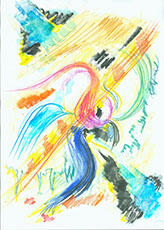
Reference Drawing #1
without music
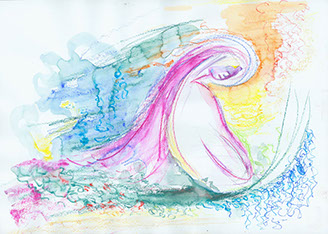
Drawing #1
with music
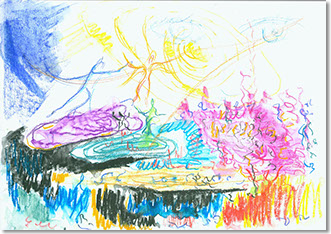
Drawing #2
with music
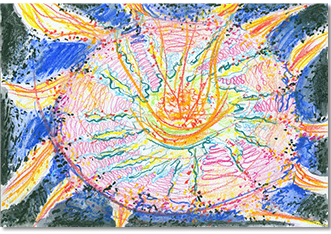
Drawing #3
with music
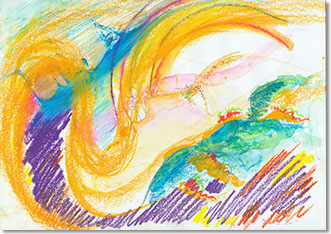
Drawing #4
with music
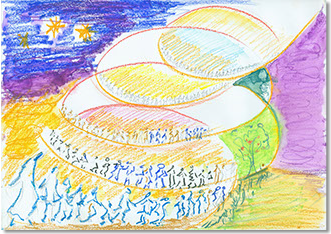
Drawing #5
with music

Drawing #6
with music
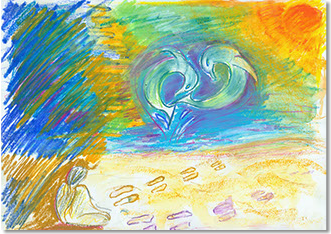
Drawing #7
with music

Drawing #8
with music
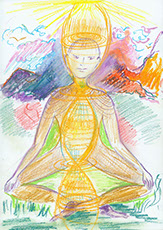
Drawing #9
with music
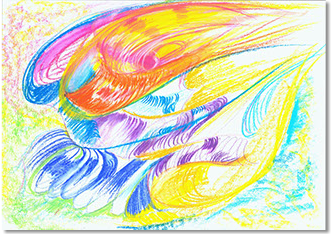
Drawing #10
with music
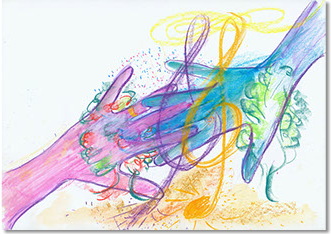
Reference Drawing #2
without music